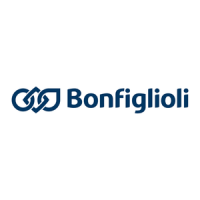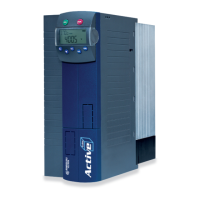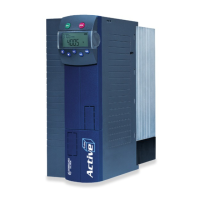
Do you have a question about the BONFIGLIOLI ACTIVE Cube ACU 201-05 and is the answer not in the manual?
| Braking Resistor | Optional |
|---|---|
| Protection Class | IP20 |
| Weight | 1.2 kg |
| Output Voltage | 0-Input Voltage |
| Switching Frequency | 4-16 kHz |
| Frequency Range | 0-599 Hz |
| Operating Temperature | -10°C to 50°C |
| Relative Humidity | 5-95% (non-condensing) |
| Storage Temperature | -25°C to 70°C |
Identifies inherent hazards like electrical, electrostatic, thermal, and falling equipment risks that cannot be eliminated.
Emphasizes compliance with all safety instructions and the importance of not removing warning labels from the inverter.
Details the STO function as a safety provision, emphasizing proper installation and commissioning by qualified staff.
Describes the standard mounting procedure for ACU 201/401 inverters up to 3.0/4.0 kW, including dimensions and installation considerations.
Details mechanical installation for ACU 201/401 inverters (4.0-9.2 kW / 5.5-15.0 kW), covering mounting and dimensions.
Explains the mechanical installation for ACU 401 frequency inverters from 18.5 to 30.0 kW, including mounting dimensions and fixing brackets.
Provides measures for electromagnetic compatibility (EMC), including installation on metal panels and proper cable routing.
Covers dimensioning of conductor cross-sections and details mains and motor connection requirements, including cable types and lengths.
Illustrates mains and motor connections for different ACU series models, specifying terminal usage and cable cross-sections.
Explains the functionality and configuration of control terminals, including digital inputs, outputs, and multifunction terminals.
Describes how to display and navigate through various actual values, including data set selection and saving.
Details how to select, edit, and adjust parameter values, including setting parameters to factory defaults and managing data sets.
Explains the function of copying parameter values between the control unit and the frequency inverter for backup and application transfer.
Explains how the control unit enables motor control based on the selected operation mode and parameter Local/Remote 412.
Provides crucial checks and safety measures before switching on the mains voltage for the frequency inverter.
Guides through the guided commissioning procedure for parameter settings, including parameter identification and machine data entry.
Explains the connection and configuration of incremental speed sensors for speed control, including parameter settings for operation modes.
Instructs to set rated motor parameters from the rating plate or data sheet for control functions, ensuring accurate machine model calculation.
Covers essential parameters for field-oriented control like Stator Resistance, Leakage Coefficient, and Magnetizing Current.
Explains how to connect and configure speed sensor 1 for control functions, detailing operation modes and their functions.
Describes how to parameterize the 3-phase machine's starting behavior, including options for sensorless control and flux formation.
Explains parameter Operation mode 630 for defining stopping behavior, including free stopping, hold, and braking options.
Details the search run function for synchronizing a rotating drive, including modes for determining flux direction and improving starting behavior.
Describes positioning functions like Reference positioning and Axle positioning, including parameters for distance, angle, and signal sources.
Covers monitoring of motor temperature via control terminals and parameter Motor Temp. Operation Mode 570, including warning and error signals.
Details configuring the multifunction input MFI1 as voltage, current, or digital input, linking it to various software functions.
Explains configuring MFO1 as digital, analog, or repetition frequency output, linking it to software modules via selected operation modes.
Describes how Operation mode Digital output 530 and relay output 532 link digital outputs to various functions based on configuration.
Details setting current limits to avoid inadmissible load and prevent fault switch-off, extending the available current controller.
Describes the PID controller-based technology controller for process control like pressure, volume flow, or speed, requiring reference and actual value assignments.
Explains field-orientated control systems based on cascade control and machine model calculation, covering current controllers, torque controllers, and speed controllers.
Describes the brake chopper transistor and external brake resistor connection, including trigger threshold settings for activation.
Explains monitoring mechanisms for motor temperature and overload, covering direct and indirect monitoring methods.











